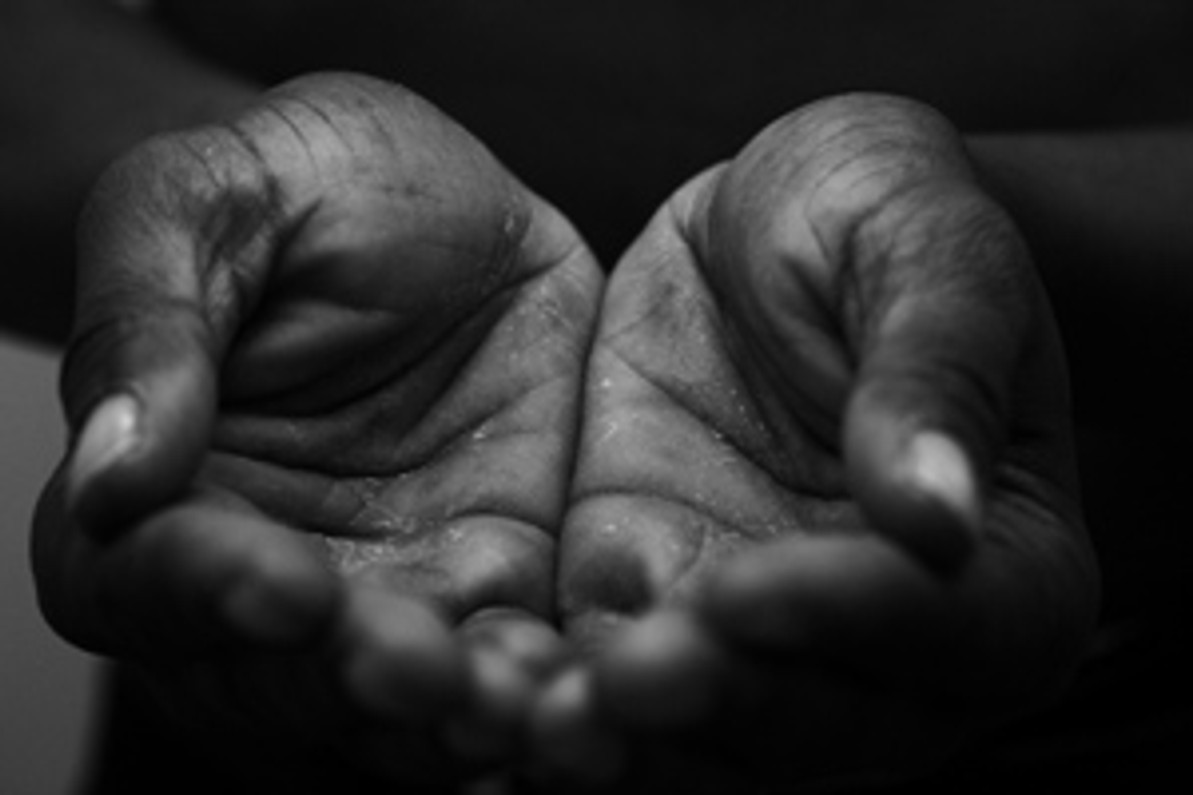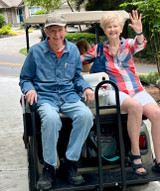GRIEF’S CRADLE
When I was born, after penicillin but before the Internet, death and grief were shrouded in euphemism. Elisabeth Kübler-Ross changed that when she published “On Death and Dying” in 1969. She observed her terminal patients go through a five-step process: Denial, Anger, Bargaining, Depression, Acceptance. Yet in practice, patients were denied knowledge of their impending death. Heroic doctors doing the utmost bankrupted families and degraded the end-of-life quality for the patient. Kübler-Ross wanted people—doctors, patients, and families—to be comfortable with the inevitability of death and to talk to each other about it. Her paradigm became the language for this conversation, and has led to the whole world of advanced directives, hospice care, and dying with dignity. Yet now a “good death” has become as idealized as natural childbirth. The dying patient is granted the ability to pull the cables out of the switchboard one at a time until 24/7 connectivity is peacefully and joyously abandoned.
Though some deaths may be that well-ordered, many are not. Each death is completely specific. For a family, a death disorders the world. When my twelve-year-old daughter Eva died, there was none of this. She was alive, I was holding her hand, she stepped away, the car hit her, and she was dead. No stages there, so whatever you think about the stages, the concept does not apply to every death. Kübler-Ross clearly said that, not that this important caveat survived the de-nuancing maw of popular American journalism. Although “stages of dying” ideologues now allow the experience of dying to be emotionally variable, the paradigm still remains “stages.”
Kübler-Ross’ ideas became so influential that they were applied to bereavement too: “stages of grief.” While this is quite popular and generally useful as a conceptual framework, an unfortunate subtextual byproduct of this construction makes grief a thing, rather than a state. Subject to analysis, this thing can be dissected, quantified, and then managed as if it’s a project at work. Such a simple arithmetic forces grief into a Euclidian framework when it belongs in a quantum one. The mourner checks off the boxes until grief is gone. The message? Grief not only is something to be got over, but it in fact is get-overable.
Kübler-Ross appreciated grief’s subtleties. She weighed in posthumously (and there is a delicious irony in that) with the co-authored publication of On Grief and Grieving in 2005. She says this in the opening paragraph of the book:
“The stages have evolved since their introduction, and they have been very misunderstood over the past three decades. They were never meant to help tuck messy emotions into neat packages. They are responses to loss that many people have, but there is not a typical response to loss, as there is no typical loss. Our grief is as individual as our lives. Not everyone goes through all of them or goes in a prescribed order.”
There you have it. Society’s focus on relieving the mourner of the symptoms of bereavement belies the truth that the palpable experience of grief is ever accessible. Grief invades the mourner’s conscious awareness, and it is never, ever over. It is a sensual, full-body experience, entering like a virus and pulsing to every corner of every cell; it inhibits serotonin and rides the messenger RNA and subverts the ATP cycle and weighs on the transmission of every synaptic impulse or waft of neurotransmitter. I grieve often for Eva, for myself, for what my family has lost. I know because grief manifests in my body. The skin below my eyes contracts; my lips stretch across my teeth. My chest caves in just a bit, drawing my arms into my chest as a feeling of terrible despair and hopelessness forms within and moves upward past my heart and under my sternum to lodge in my throat. I may cry, in that moment, or I may curse or bang the table or the wall of the shower or replace the pots in their drawer with particularly emphatic force. Sometimes the moment simply passes; most often I can talk myself down. It often is useful to exhaust myself physically.
It is the rare first-person account of grief, whether memoir or fiction, that does not include physicalized symptoms: a deadened feeling, listlessness, searing pain in the heart, uncontrollable sobbing, blurring of vision, ringing in the ears, throwing things or pounding them, lack of appetite, slowness of gait, tripping often, inability to exert physical strength, disappearance of sexual desire and/or the physical ability to perform sex, dissociation, compulsion, self-mutilation, or other unconscious compensatory behaviors. I suspect the full list is much longer. For me there is a constant feeling of broken-heartedness, a big dead space in the middle of my chest. Memory resides in the body, and the physical experience of grief now is imprinted in me. Triggers abound in daily life, and have the power to reignite the grief state. Around my house we call that a PTSD moment.
Indeed, given all this authentic psychophysical imprinting, how is it possible for grief to do anything but linger? This experience, “Complicated Grief,” has become a candidate for definition as a psychological disorder. Maybe so, in some cases, but really. Of course grief is complicated. Your loved one has been ripped away; that part of your soul is an open, visible wound. The role that relationship played in your unconscious is, by its absence, fully and irreconcilably conscious, its failures and forgotten chances as memorable as the good. The loss remembers and anticipates every other loss large and small: of crying inconsolably as a child, of the womb, the nipple, mother, childhood, father, career, and as we age even our basic physical and cognitive competence. Grief extracts fear of death from the subconscious and hangs it like a glittery mobile right in the mind’s lobby. It is an essential and honorable human experience.
As C.S. Lewis notes in A Grief Observed:
“For all pairs of lovers, without exception, bereavement is a universal and integral part of our experience of love. It follows marriage as normally as marriage follows courtship or as autumn follows summer. It is not a truncation of the process but one of its’ phases; not the interruption of the dance, but its next figure. We are ‘taken out of ourselves’ by the loved one while she is here. Then comes the tragic figure of the dance in which we must learn to still be taken out of ourselves though the bodily presence is withdrawn, to love the very Her, and not fall back to loving our past, or our memory or our sorrow, or our relief from sorrow, or our own love (p. 59).”
Despite this knowing, every mourner is surprised by his grief. Isolated behind his loss, the mourner needs one who already knows, a loving companion who tolerates his pain, an anchored point of reference in a world that is suddenly, utterly, different. The day-to-day bustle of the rest of the world is unheard in the face of the mourner’s clamorous loss. In intact communities, the bereaved are served by networks that allow their grief to flower. I had Judaism: friends, family and co-religionists buffered me against the Common World’s oppressive normality. Lewis, a lifelong bachelor, married at fifty-four and lost his beloved to cancer four years later. He was a devout Catholic and perhaps he found his way out of himself through the Church. And to “once again love the very Her,” the mourner must yield to the transformative power of his grief.
Joan Didion’s The Year of Magical Thinking angered me the first time I read it. Honestly,
I don’t think I read it very carefully. She published so quickly, I thought. Only a year? She couldn’t possibly know a thing yet. But grief only lets you do what you can do. Now, I honor that. Didion is a writer, so she wrote. It’s what she could do. I rode my bike a lot. I’m sorry, Joan; I should not have disrespected you. You moved between your disasters, making impossible decisions, getting through each day. She was dealing with her daughter’s illness, as well, and, later, Quintana died; we are in the same club now.
Didion says the book is her “attempt to make sense of…months that cut loose any fixed idea I ever had about death…about grief, about the ways in which people do and do not deal with the fact that life ends, about the shallowness of sanity, about life itself.” Didion found herself expecting her husband, John Gregory Dunne, to be there in all of the ways he always had been. By following the rituals of their life together, she would hold up her part of the bargain, without which there was no chance for him to once again fulfill his. Ultimately, she writes, “we must relinquish the dead, let them go, keep them dead.” I had to keep Eva dead so I didn’t try to parachute into the other world to find her. I checked daily. “Still dead,” I would say to myself. “Still dead.”
Death is not of this life, but grief is. When I was in shock, the first three or four months, I often dissociated. I experienced the universal human struggle inside of me, as if universe-size blocks of good and evil were thrusting against each other with the torque of gears the size of a galaxy. Because my daughter had died, I straddled the worlds of living and dead. I was graced with a special vision. Maybe I was supposed to be a prophet now, because I had experienced such a devastating enlightenment. I had existential conversations about it with my rabbi; what was my duty in light of this new inner knowledge?
Fortunately, Rabbi Lew convinced me to abandon the prophetic calling, but the next thing that happened was that I developed X-ray vision. I mean this explicitly. I saw the space in things rather than their substance; I looked between the electrons and the protons to see what was beyond. When I hugged my wife, her body was warm and soft and muscular—even though from across the room, I could look straight through her like she was a piece of tissue held up to the light. When she held up the newspaper, I could see the type floating freely in the air with her face clearly visible beyond. To my perception, these phenomena were exact and observable; therefore, true. Given this, I reasoned, the world of things must be arbitrary and exist due to some prehistoric and subconscious human agreement. This excited me, because if my X-ray vison was real, it broke the agreement. And if the agreement could be broken for me, maybe I could blow up the whole thing and perhaps, in the ensuing chaos, find Eva again. Besides, I had lost track of her only for a few seconds. Maybe there could be a do-over.
It was not to be. The wall remained true, the floor solid, yet for a time my world included an additional dimension. The conflict was poignant. It went on for six months. It seemed absurd to be a body that breathed and ate and slept and did all kinds of other things that rooted me in the world. In my grief calculus, this was the core dialectic—the tension between the day-to-day requirements of real-world participation as mediated by the constant demands of my body, and my heartfelt emotional and spiritual desire to remain connected to Eva in world of the dead. Believing in these impossibilities inoculated me against the overwhelming despair, guilt, and sorrow that descended like a tidal wave in the second and third year of our bereavement. This is my analog of what Didion calls magical thinking: an authentic experience in a delusional context. Over the ensuing twenty years, through endless fits and starts, bouts of the deepest shame or vainglorious pride, I have had to learn how to live acceptably despite betraying my lost child every time I take a breath.
Both of these stories, mine and Joan’s, are personal accounts of an incident of bereavement and a subsequent unique experience of grief. We each have moved on from the acute phase. Didion’s grief seemingly finds a place; publishing a book certainly is an act of communal connection. My experience is more one of reconstruction, like after a hurricane—the things that got destroyed are still destroyed, even if something gets rebuilt on the site. There is no place in any world where I can “Accept” my child being dead.
This must be Complicated Grief. Here I am, two decades later, and I’m accompanied always by that unbearable moment—being unable to protect her when it counted. So even though my grief looks Ordinary because I work, exercise, play music, have a living daughter, maintain a marriage and friendships, my inner world is patrolled by a platoon of wounded archetypes, holding each other up, the unique experience of grieving their bond and the uncertain foundation of my daily life. There must be a purpose to grief more sublime than simply proving one’s emotional capacitance. Why would our biology demand grief of us if it wasn’t good for our survival?
What grief breaks is neither comprehensible nor repairable. Grief emerges from one’s deepest soul and can only be incorporated, welcomed, allowed to establish a secure home in a conscious and generous part of the self. It weaves itself indelibly into the survivor’s landscape, infecting everything with its richness and pathos, laying for each mourner a unique path that nonetheless has been walked by every single human being who ever loved anyone. I could not join Eva in the world of the dead. I could not return her to the living. I could not abandon her death to the past. I could not abolish my grief. Instead, it threaded itself onto my deepest soul, drawing the unbearable pain of my loss away from Eva’s memory until I could love her once again.
THE END
ABOUT THE AUTHOR-------------------------
“Grief’s Cradle” was first published in Adelaide Literary Magazine, November 2017."
Mark Gunther has been many things in his life–student, hippie, cook, husband, carpenter, father, administrator, entrepreneur, cyclist, writer–but always an activist, guitar player, and dancer. He is Managing Director of the Eva Gunther Foundation, and a co-founder and currently Board Chairman of Alliance for Girls. In 2015 Mark earned an MFA in Writing from University of San Francisco. His novel of grief and recovery, Without Jenny, will be published by Koehler Books in March of 2018.




